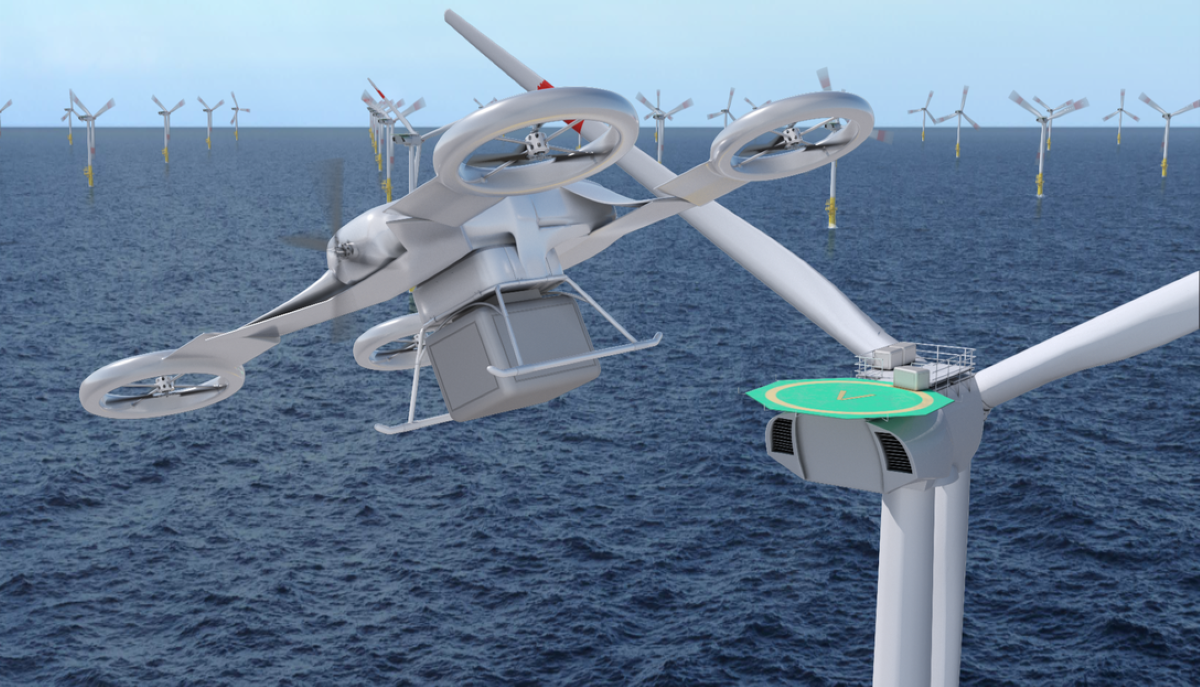
The German Federal Ministry for Economic Affairs and Climate Protection is funding a new three-year research project on the use of passenger-grade air taxis and cargo drones to complement helicopter and ship deployments when servicing offshore wind farms. The idea is to fly technicians and materials out to sea using drones, and reduce the time and cost it takes to service a wind turbine.
The project is being spearheaded by electric utility company EnBW, wind farms and solar parks developer Energiekontor, and the German government’s research center for aeronautics and space DLR.
Offshore wind farms play a critical role in ensuring sustainable energy supply in Germany. However, their location far from the coast means long journeys for the maintenance teams. Moreover, accommodating service technicians at sea is also a costly affair.
The engineers working on the project envision using cargo drones to transport tools and materials directly to the top of a 100-meter wind turbine – eliminating the need for cranes. And if service technicians were to travel by air taxis, it would negate the need for logistically complex transfers to the turbines and two-week shifts with overnight stays at sea.
Related: Wingcopter drones to deliver spare parts to offshore wind farms
Dr. Michael Splett, head of offshore operations at EnBW, insists the application of drones in this manner makes perfect sense. Here’s Splett:
The use of drones can also add value and contribute to reducing costs. As flight paths are almost exclusively over uninhabited areas, we anticipate fewer restrictions than for Urban Air Mobility (UAM).
The research project would strive to clarify several issues associated with bringing wind energy and drone technologies together. For example, how offshore wind farms need to be equipped to enable the use of drones, what a drone landing platform could look like, how a transport container needs to be designed, and what communication interfaces could look like.
At present, scientists are conducting experiments with a DLR drone on a wind farm on land. A simulation model of operations in the offshore area is also being developed in parallel. And to ensure that the research project is not just an exercise in theory, extensive practical testing is also being prepared in the form of the Offshore Drone Challenge (ODC).
Jonas Janke, project manager and offshore specialist at EnBW, says:
We are inviting all technology players to benefit from our research results and demonstrate them live to the world’s trade press in tests with their own products.
More details about ODC can be found here.
Also read: Blueprint for integrating autonomous air taxis into the national airspace system
FTC: We use income earning auto affiliate links. More.





Comments